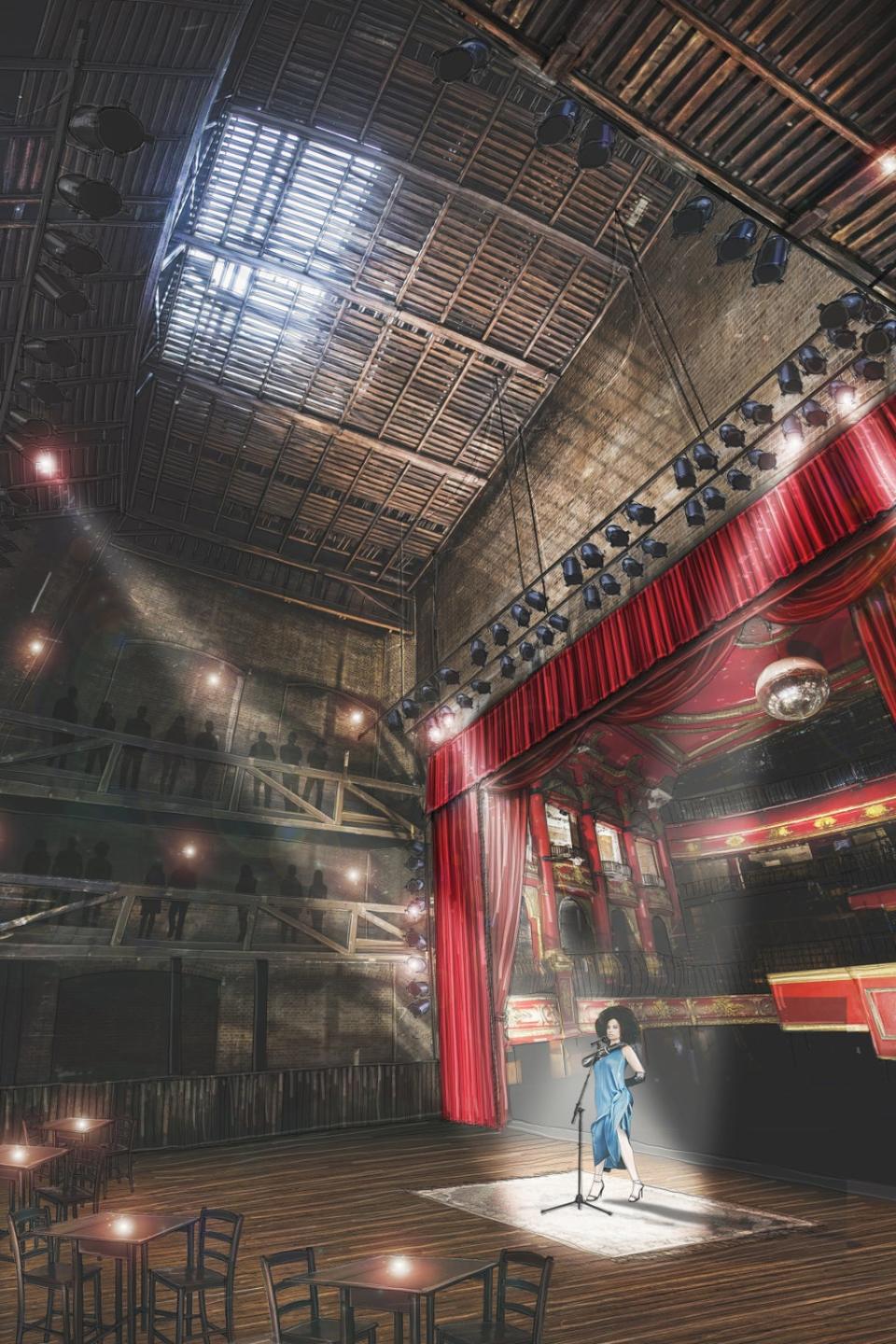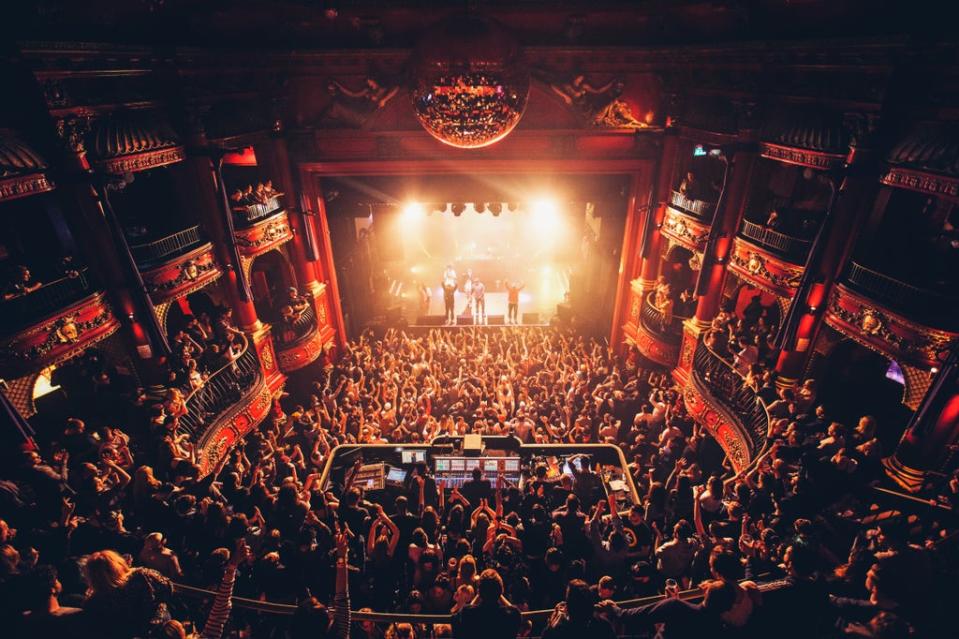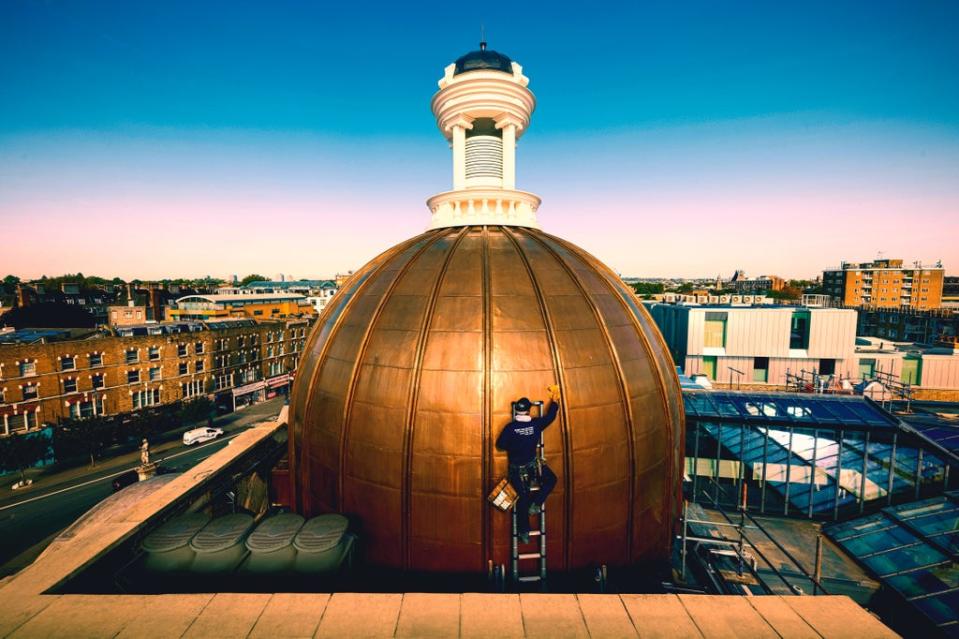KOKO reopening: Iconic Camden venue unveils relaunch plans after £70m revamp

After six years of planning and three years of restoration — as well as the setbacks of a building fire, vast water damage and, of course, a global pandemic — an historic London venue has finally unveiled its plans to reopen.
KOKO, the north London landmark that opened as the Camden Theatre at the dawn of the 20th century and has hosted acts as diverse as Prince and Monty Python in the 121 years since, will reopen its newly revamped, 50,000sq ft space in spring next year.
The venue has been closed since March 2019 and hit the headlines in January last year when 60 firefighters were sent to tackle a blaze which, at one point, engulfed a third of the building’s roof.
“It’s been a challenging two years since the fire and then rolling straight into the pandemic,” says CEO Olly Bengough, who bought the venue and rebranded it as KOKO back in 2004. “So to be on the last stretch and looking forward to launching next spring is obviously a great moment for my team and everyone at KOKO. We’re now just really excited about bringing KOKO back.”
Some £70m has been pumped into the redevelopment, which has enabled a four-storey upwards extension of the Grade II-listed theatre, as well as an expansion into two adjacent buildings: a former piano factory dating back to 1800, and the old Hope and Anchor pub, which counted Charles Dickens among its local patrons.
The main theatre space — in which the likes of The Rolling Stones, Ed Sheeran, Kanye West, Amy Winehouse and Stormzy have all played — will be fully restored as the building’s primary gig venue.

A new performance area, known as the Fly Tower, will also be unveiled. A “surprise discovery” during the building work, it was restored with the help of English Heritage, and will make the most of the large volume of space above the theatre stage, with fans able to watch on from an elevated gallery.
A new, late-night pizzeria and tap bar will also host intimate live performances, while a shop selling exclusive merch will double up as an area for DJ sets.
A number of other spaces within the venue — including a roof terrace and conservatory, a penthouse and recording studio, a piano room, library, hidden speakeasy, stage kitchen and vinyl rooms, as well as a cocktail bar situated within the restored copper dome that was damaged during the fire — will also open as part of a new membership scheme.
Hi-spec live-streaming capabilities are set to be integrated throughout the venue. As a performance medium, it’s something that saw huge growth during the various lockdowns of the past 18 months, but for Bengough, having this kind of thing at KOKO was already part of the pre-pandemic plan.

“When I started this project back in 2015, I think streaming was just beginning to break through,” Bengough says. “And what I thought was that, actually, there was going to come a day where the lines will be blurred, and anyone who loves music is going to want to experience it whether that’s in a venue or at home.”
It will, Bengough says, offer greater opportunities for the musicians themselves, too. “It will allow artists to come to the building and know that they can create multiple experiences for whoever they want — they can create boutique experiences within the venue, secret shows, or play the main theatre, but at the same time, they can stream to their fans at home.”
Showcasing new talent is something the venue has knack for — Madonna played her first ever UK gig there in 1983 — and the nurturing of emerging artists will be a focus for KOKO after it reopens. “By having smaller venues, we can work with up and coming artists,” says Bengough. “With the backdrop of a lot of pubs closing down, which provided a really good platform for new acts, I think our smaller spaces will allow us to really work with new talent and break them, and then hopefully one day they can get up to the main stage.”

And aside from hosting all these performances — Bengough predicts that the venue will be able to host “close to 1,000 musicians a year” once it reopens —KOKO’s newly formed foundation is set to launch as a registered charity at some point in 2022.
“I think every community needs help, and we want to focus on the local community in Camden and see what we can give back,” says Bengough. “And then, hopefully, we’re going to try and work with some great musicians and create some music programmes for emerging talents who might not have the chance to have a pathway into the music industry.”
Read More
Colin Currie Group/Synergy Vocals: A birthday card to Steve Reich
Rufus Wainwright at the Palladium: strangely muted, if gently sparkly
Ellie Goulding at the Eventim Apollo review: sparkly as a sequin

 Yahoo News
Yahoo News 